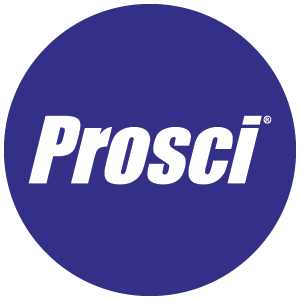Do You Need a Roles and Responsibilities Matrix for Change Management?

6 Mins
Updated: October 30, 2025
Published: May 8, 2025

Who is expected to carry out tasks and responsibilities during a change? The short answer is everyone. Here’s an overview.
Building a well-designed roles and responsibilities matrix focuses on ensuring that the right people lead and execute critical activities that can make or break the success of a change initiative. As a change practitioner, you can help provide clarity and accountability of critical change roles for a specific project with a roles and responsibilities matrix.
The Purpose of a Change Management Roles Matrix
A change management roles matrix is a structured tool change practitioners use to clarify and outline the responsibilities of key stakeholders and who will fulfill each role during change. It ensures alignment and accountability while enabling effective collaboration and decision-making throughout the change management process.
How does a change management matrix differ from a RACI?
A change management matrix is similar to a RACI but serves a distinct purpose in achieving change success. Specifically, it outlines the roles of stakeholders in change management and clarifies who is responsible for change activities. In contrast, a RACI matrix (Responsible, Accountable, Consulted, Informed) is a tool that can be applied to any project, change or otherwise. Project managers use them to define the responsibilities of stakeholders across tasks, workfows and deliverables as part of a project.
A change management matrix includes change practitioners, sponsors, people managers and impacted employees. It emphasizes the people side of change, ensures stakeholders understand how to facilitate individual transitions, and includes change management activities like communication, training, resistance management, and coaching. Change management matrices are helpful for change initiatives, whereas a RACI can be applied to any complex project.
How does a roles matrix differ from a role roster?
A roles and responsibilities matrix and role roster are not the same but serve complementary purposes.
The role roster helps change practitioners identify and activate the individuals needed to fulfill change management roles. It’s a tool used to determine who will be involved in the change, assess their level of support and influence, and determine where individual barriers to change exist by leveraging the ADKAR Model. The role roster focuses on activating change leaders and ensures they are prepared, equipped and supported to fulfill their roles.
The roles and responsibilities matrix clarifies who is responsible for which activities within the change initiative, ensuring all necessary roles are accounted for and filled for change success. It includes change practitioners, sponsors, people managers, impacted employees, and the specific tasks related to managing the change process, ensuring accountability and clarity among team members.
Benefits of a Change Management Roles and Responsibilities Matrix
Outlining roles and responsibilities positions stakeholders to fulfill their roles and execute tasks while prioritizing the people side of change. Here’s a quick overview of the benefits:
Enhanced clarity
A roles and responsibilities matrix eliminates confusion by defining who will handle the critical change management tasks. This ensures that stakeholders understand their role in supporting the change. The collective impact of the key stakeholders works to bring about and sustain change in organizations for long-term impact and success.
Increased accountability
A roles and responsibilities matrix fosters accountability and transparency among stakeholders by assigning ownership of specific responsibilities and tasks. With detailed responsibilities outlined, teams can reduce gaps in executing critical activities that help make change management more effective, driving successful implementations and sustained change.
Streamlined collaboration
Defined roles and task ownership help teams work together more efficiently and reduce redundancies and miscommunication. The matrix enables better coordination between sponsors, people managers, and employees throughout the change process by specifying necessary tasks and responsibilities and ensuring the right people are covering them.
Aligned change management frameworks and roles
Finally, a roles and responsibilities matrix helps align key stakeholders with proven change management frameworks, such as the Prosci 3-Phase Process. A structured framework like our 3-Phase Process breaks change initiatives into phases and stages, including essential activities to support the work's success. Pairing a roles and responsibilities matrix with a structured framework helps achieve change at the organizational level.
Key Components of a Roles and Responsibilities Matrix
Effective change management requires key individuals to engage with the change and coordinate their efforts in a defined way, outlined in a roles and responsibilities matrix.
Below is an overview of the core roles to consider:
Change practitioners
Dedicated resources for change management are among the greatest contributors to change success in Prosci’s Best Practices in Change Management research. A dedicated change manager or change management team serves as a point of responsibility and accountability, tracking progress on critical change management activities. Change practitioners formulate the strategy and change management plans for the people side of the change initiative. They apply structured methodologies and develop role-based activities for key stakeholders.
Perhaps most importantly, change practitioners use their expertise about change to prepare and equip the employee-facing roles in the organization for their critical activities during a change. Employee-facing roles include Sponsors and People Managers.
Core Roles in Effective Change Management
| Employee-Facing Roles | Enabling Roles |
| Sponsor | Change Practitioner |
|
|
| People Manager | Project Manager |
|
|
Executive sponsor
For over two decades, active and visible sponsorship has consistently been cited as the top contributor to change success in our research. The change sponsor gives the change credibility, authorizes funding and resources, and performs employee-facing activities to drive the initiative forward. Ultimately, sponsors play a key role in supporting the change management strategy and process, engaging stakeholders, and communicating about the change.
Correlation of Sponsor Effectiveness With Meeting Objectives

People managers
Managers and supervisors—or people managers—are essential during any change because they are close to the action and provide direct support to their team members as they navigate the change. They play a critical role in the communication efforts of the change process, as people managers are the preferred senders of messages about the personal impact of a change on their team members.
Preferred Senders of Messages

Project managers
The project manager or project management team focuses on the project’s design, development and deliver—or the technical side of the change. Working with the change practitioner, the project manager ensures that the technical and people sides of the change move forward in unison, aligning the project delivery with the stages of change.

Impacted employees
People are the heart of change management, and organizational change requires individual change. Impacted employees are a key component of the roles and responsibilities matrix because they are the ones who will take part in the change and must identify where and how they need support to improve adoption.
Other roles supporting the people side of change
In addition to the core roles above, other people-focused functions, including human resources, learning and development, and communications, may contribute their knowledge and expertise to help employees engage with and adopt the change. Working with these teams helps maintain strategic alignment with broader organizational goals and ensures the change management strategy fits the team.
What Are Prosci’s 5 Roles of a People Manager in Change Management?
People managers are especially important to success because of their relationship and proximity to employees affected by change. Based on our research, people managers have five unique and important roles to play during a change initiative, known as CLARC:
- Communicator – Deliver personal impact messages to their direct reports about the change
- Liaison – Engage with and liaise between their employees and the project team, sharing information and feedback between the groups
- Advocate – Demonstrate their support for change in active and observable ways to increase the likelihood of their direct reports buying in
- Resistance Manager – Proactively define what resistance looks like in their group and offer solutions to help impacted people address barriers
- Coach – Provide training, information and support to adopt and use the change
What are the Key Roles of a Sponsor in a Change Management Team?
Sponsors must also fulfill critical roles and responsibilities by executing what Prosci calls the ABCs of Sponsorship. The ABCs of effective sponsorship are:
-
Actively and visibly participate throughout the project lifecycle with a sustained presence to build and maintain momentum for change.
-
Build a coalition of support by mobilizing other key leaders and business stakeholders to legitimize the change across the organization.
-
Communicate, support and promote the change to impact groups, providing the business reasons for the change and the risks of not doing so.

Using a Roles and Responsibilities RACI Matrix
Creating a roles and responsibilities matrix involves a structured approach to ensure clarity, accountability, and alignment. The process follows several key steps:
-
Identify stakeholders – Determine who will be involved in the change process, including change practitioners, the change sponsor, people managers, project managers and impacted employees. Each stakeholder plays a critical role in supporting and sustaining the change.
-
Identify responsibilities – Outline the key responsibilities of the change initiative for each stakeholder group you identified.
-
Map responsibilities – Work through your list of responsibilities from initiation to implementation and assign them to the stakeholder groups, identifying gaps.
-
Categorize responsibilities – To structure the matrix, categorize the responsibilities for clarity. One way to do this is to use the RACI model to designate who executes tasks, holds final accountability, provides input, and needs to stay informed.
-
Engage and communicate with stakeholders – Ensure all stakeholders understand and commit to their roles and responsibilities. Ongoing communication is crucial for ensuring alignment and accountability.
-
Monitor and update as needed – Responsibilities shift as the change progresses. Review and adjust the matrix to ensure it is relevant and accurate.
Best Practices for Implementing a Roles and Responsibilities Matrix
A well-structured roles and responsibilities matrix is most effective when stakeholders provide input during its creation. Involving stakeholders in its validation enhances commitment and accountability early in the process.
Additionally, an effective matrix will provide clarity and alignment for everyone on the team. Ensure each role’s responsibilities are clearly defined and aligned with the change initiative's overall goals and the organization’s objectives for maximum impact.
Successful Change With Clear Roles and Responsibilities
When you identify the right people for the right roles and help them understand their responsibilities in driving change forward, you can produce the desired outcomes of any change initiative. Even better, structured roles and responsibilities build lasting change capabilities across organizations for years to come.




